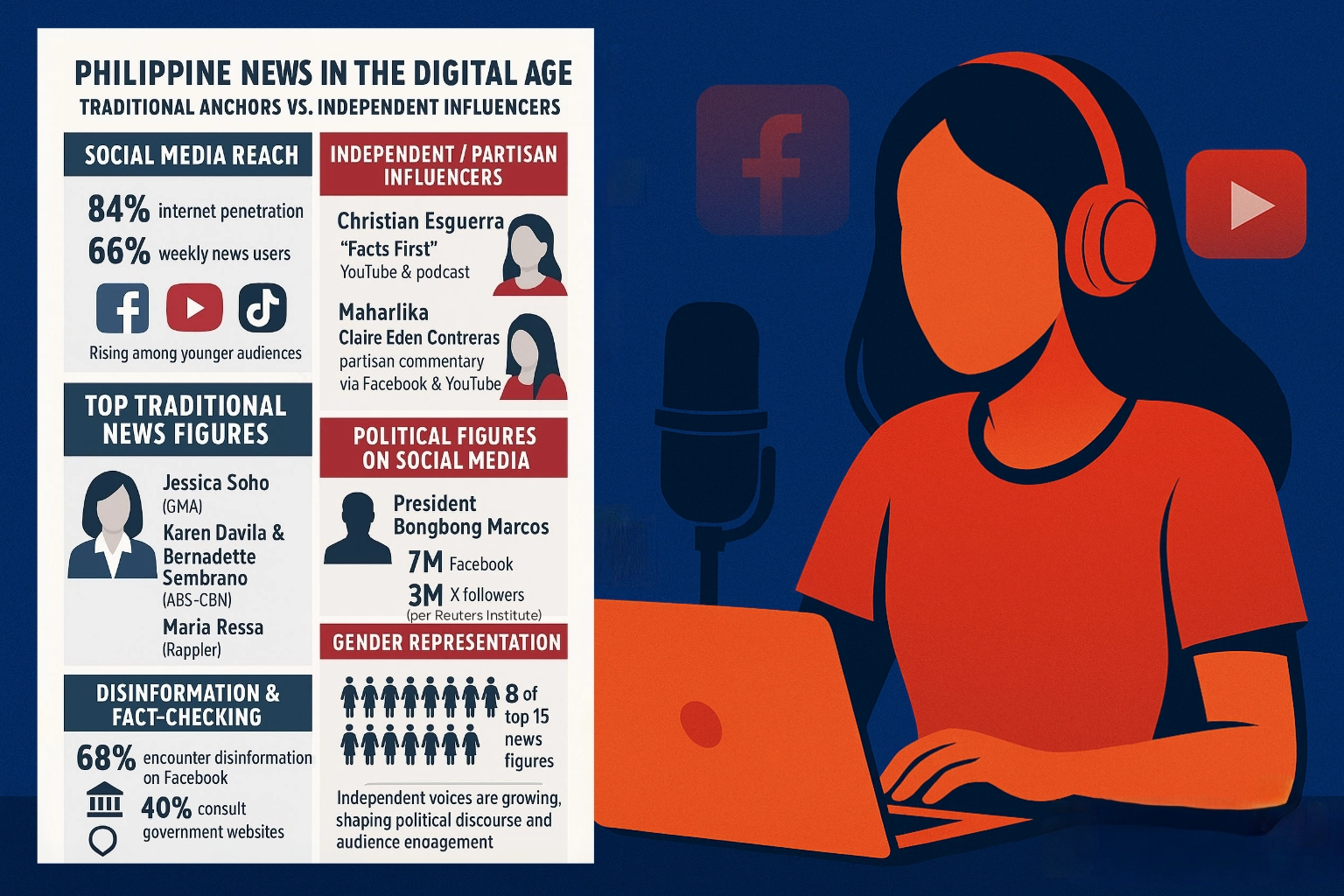Philippine media sees shift as influencers gain reach
Social media has become central to how Filipinos consume news, but platforms like Facebook and YouTube are not only amplifying traditional broadcasters—they are also giving rise to a new generation of independent creators who are reshaping political discourse.
A recent report from the Reuters Institute for the Study of Journalism mapping news creators and influencers shows how these digital voices are challenging established media while complementing its reach.
The Philippines boasts 84% internet penetration, and around two-thirds of the population uses social media weekly for news. Yet despite widespread usage, trust still favors traditional outlets: 66% of Facebook users follow journalists rather than personalities, and 70% of YouTube viewers rely on news brands over individual creators.
News anchors like Jessica Soho of GMA and ABS-CBN’s Karen Davila and Bernadette Sembrano remain among the most cited, alongside Rappler’s Nobel laureate Maria Ressa, highlighting the enduring influence of legacy media even in the digital space.
Still, independent voices are gaining prominence. Veteran journalist Christian Esguerra, formerly of ABS-CBN’s After the Fact, now produces his own YouTube show and podcast, Facts First. Launched in 2022, it has grown into a platform for in-depth analysis and fact-based reporting, airing three times weekly and earning praise for maintaining journalistic integrity in the digital sphere.
Similarly, Maharlika—the online persona of Claire Eden Contreras—once a supporter of President Ferdinand Marcos Jr., now delivers sharp commentary from abroad via Facebook and YouTube, demonstrating how social media can facilitate ideological shifts and political critique outside traditional institutions.
Political figures themselves are leveraging the same digital reach. The president’s official Facebook page has over 7 million followers, while his X (formerly Twitter) account is reported to have nearly 3 million (though fact-checking shows it actually has around 1.2 million), illustrating how public figures can cultivate direct influence and bypass broadcasters entirely.
Yet this rise in online influence comes with heightened risks: the Reuters Institute’s 2025 Digital News Report found that 68% of Filipinos have encountered disinformation on Facebook, 48% on TikTok, and 39% on YouTube. Political actors were seen as a greater source of misleading content than online influencers, underscoring the delicate balance between influence and accountability in the digital arena.
As audiences navigate this evolving ecosystem, media literacy is becoming increasingly important. About 40% of respondents said they fact-check online information via government websites, 37% consult trusted news organizations, and 34% use dedicated fact-checking platforms. Younger Filipinos are particularly likely to cross-reference multiple sources before accepting a story, signaling an appetite for verification amid abundant digital content.
The Reuters Institute’s mapping of creators and influencers highlights a hybrid news landscape where traditional trust intersects with digital reach.
Long-standing journalists continue to command respect and visibility, but independent creators now shape discourse, experiment with new formats, and engage audiences directly. Figures like Esguerra and Maharlika exemplify this shift, joined by a growing number of digital personalities who are carving out spaces for accountability, debate, and ideological critique.
For Philippine media, the emerging model is neither fully traditional nor entirely digital—it is a fusion, one where institutional credibility and independent creativity coexist to define the future of news.



0 Comment